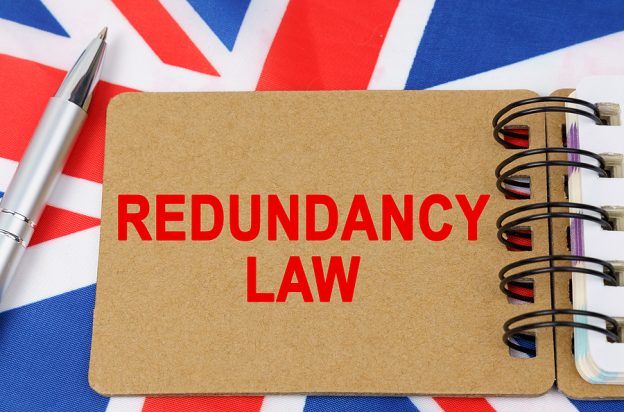
We’ve all heard that more redundancies are expected over the next 12 months. The Coronavirus Job Retention Scheme (CJRS) has ended, which means that companies that relied on furlough payments are back to being responsible for 100% of their employees’ wages. Not all of them will be healthy enough to maintain their pre-COVID staffing levels.
Is this fear of increased redundancies based on anything solid?
Unfortunately, there is research to back up the general worrying about UK redundancies. For example, Renovo (career transition and outplacement company) did some recent research on a sample of companies’ expectations of making redundancies. Some stark statistics emerge:
- 69% of companies expect to cut staffing levels
- 84% of these companies had employees on furlough
- 46% see redundancies happening within the next six months
- 23% anticipate making redundancies in the next six to 12 months
The CJRS scheme ended on 30th September this year, which brought an end to the furlough payments for employees. After the double whammy of leaving the EU and the impact of COVID-19, many businesses won’t be able to sustain their previous position.
Getting made redundant is a very real possibility for a lot of taxpayers. And if it happens to you, you’ll have lots of questions. We’ve rounded up the answers to some of the more common questions here.
Despite how it feels, it’s not the end of the world. But it’s important to arm yourself with the necessary knowledge to get yourself back on track.
What does being at risk of redundancy mean?
Employers usually tell their employees if they’re at risk of being made redundant, while they’re sorting the situation out.
It doesn’t mean it’s definitely going to happen. For example, you may be redeployed to a different area of the business. Bear in mind that you can refuse an alternative role, but if you do, you might miss out on your statutory redundancy pay.
Do employers have to give you a notice period before making you redundant?
The statutory notice periods in Scotland, England and Wales are dependent on the terms of your contract of employment and how long you’ve been an employee:
- 12 years+: 12 weeks minimum notice
- Between two and 12 years: one week for each year you’ve been employed
- Between one month and two years: one week
These are the minimum notice periods an employer has to give their employees. But they can choose to let you know earlier, no matter how long you’ve worked for them.
You might be offered pay in lieu of notice. This happens in certain situations when a company can’t keep you on for your notice period. For example, if the business is closing completely. It means that you will get your basic salary for your notice period, even though you have to leave before you’ve completed it. People usually also get the cash equivalent of benefits or entitlements that you’d have had during your notice period (if you’d been able to work it).
How do employers choose who to make redundant?
There are very strict laws governing the redundancy procedure. Employers must follow them correctly, or they can be charged with unfair dismissal at an employment tribunal.
For example, a company needs to reduce its staffing levels in one particular department. To make sure that they’re fully compliant with employment law they must:
- List all the people they can choose from
- Specify the selection criteria that will be used to determine who, from that group, will be made redundant
- Discuss the situation with every employee individually, to see if there’s any way to avoid redundancy (for example, redeployment to a different department)
- If over 20 redundancies are being made within a 90 day period, employers must talk to the appropriate Trade Union or staff representative
If you’re made redundant, worked with the company for more than two years and feel that the correct procedures weren’t followed, you’ve got only three months from termination to make a claim of unfair dismissal. ACAS is your first port of call, in this situation.
Is there anyone who can’t be made redundant?
Any employee can be made redundant, but there are reasons that employers can’t use as their selection criteria.
They can’t use any of these reasons to make you redundant:
- You’re a whistle blower
- You asked for flexible working (eg: some time working from home)
- You’re a member or representative for a Trade Union
- You have a fixed contract, or work part time
- You hold the post of an employee representative
- You’re a pension trustee
- You’re pregnant, or on maternity, paternity or parental leave
- A protected characteristic (sex, race, disability, sexual orientation, religion or belief, gender identity or reassignment)
This doesn’t mean that you can’t be made redundant if you’re in any of these circumstances. It means that employers can’t state that this is why they’re making you redundant, over your colleagues.
How much redundancy pay will I get?
This is the big question, isn’t it? And it’s not a one size fits all answer. There are several factors at play when your redundancy package is worked out, including; how long you’ve been an employee, the outcome of your redundancy consultation and your contract’s terms and conditions.
You’re usually entitled to statutory redundancy pay if you’ve been an employee for at least two years. And the formula is then comprised of your age and how many years you’ve been an employee:
- Age 41+: 1.5 week’s pay for every complete year as an employee
- Age 22 – 40: 1 week’s pay for every year employed
- Under 22: Half a week’s pay per year working there
There is a maximum amount of redundancy pay embedded into this rule. The maximum weekly amount you can get is £544 and the total statutory redundancy payout is £16,320. These amounts apply to all UK countries, except Northern Ireland, who has its own procedures.
This is where your redundancy consultation is extremely important. These statutory amounts are the minimum and many employers pay more. So you must make sure that the actual figures are part of this discussion.
Is there any help to find a new job?
The government has set up new Job Help website, that currently lists more than 65,000 available jobs in England, Scotland and Wales. If you’re in Northern Ireland, you can get help here.
The Kickstart Scheme is for businesses who employ people on Universal Credit, between the ages of 16 and 24. It closes on the 17th December 2021, so don’t wait to apply. This gives successful applicants 100% of the National Minimum/Living Wage for 25 hours per week, for six months. It also pays for minimum auto-enrol pension contributions and employer NICs for that member of staff. This is a great saving for the company, so if you’re looking for staff it’s definitely worth checking out.
A brand new scheme called Job Entry Targeted Support (JETS) is also there to help people who’ve been out of work for at least 13 weeks and are on Universal Credit or the new Jobseeker’s Allowance. Your Jobcentre Plus work coach will give you details, if they think it’ll help you. It includes tailored advice about different aspects of finding work, like interview coaching and CV construction.







